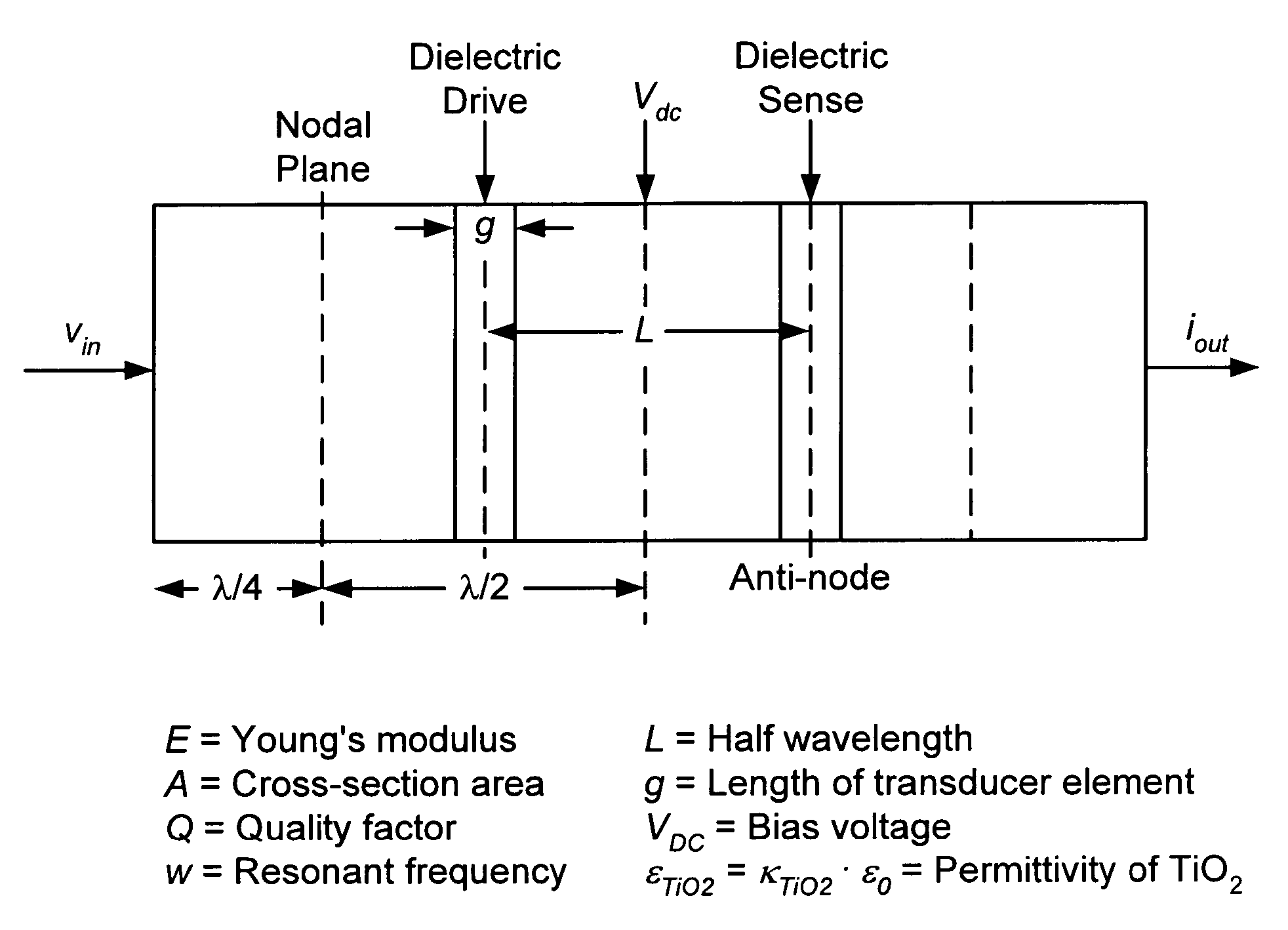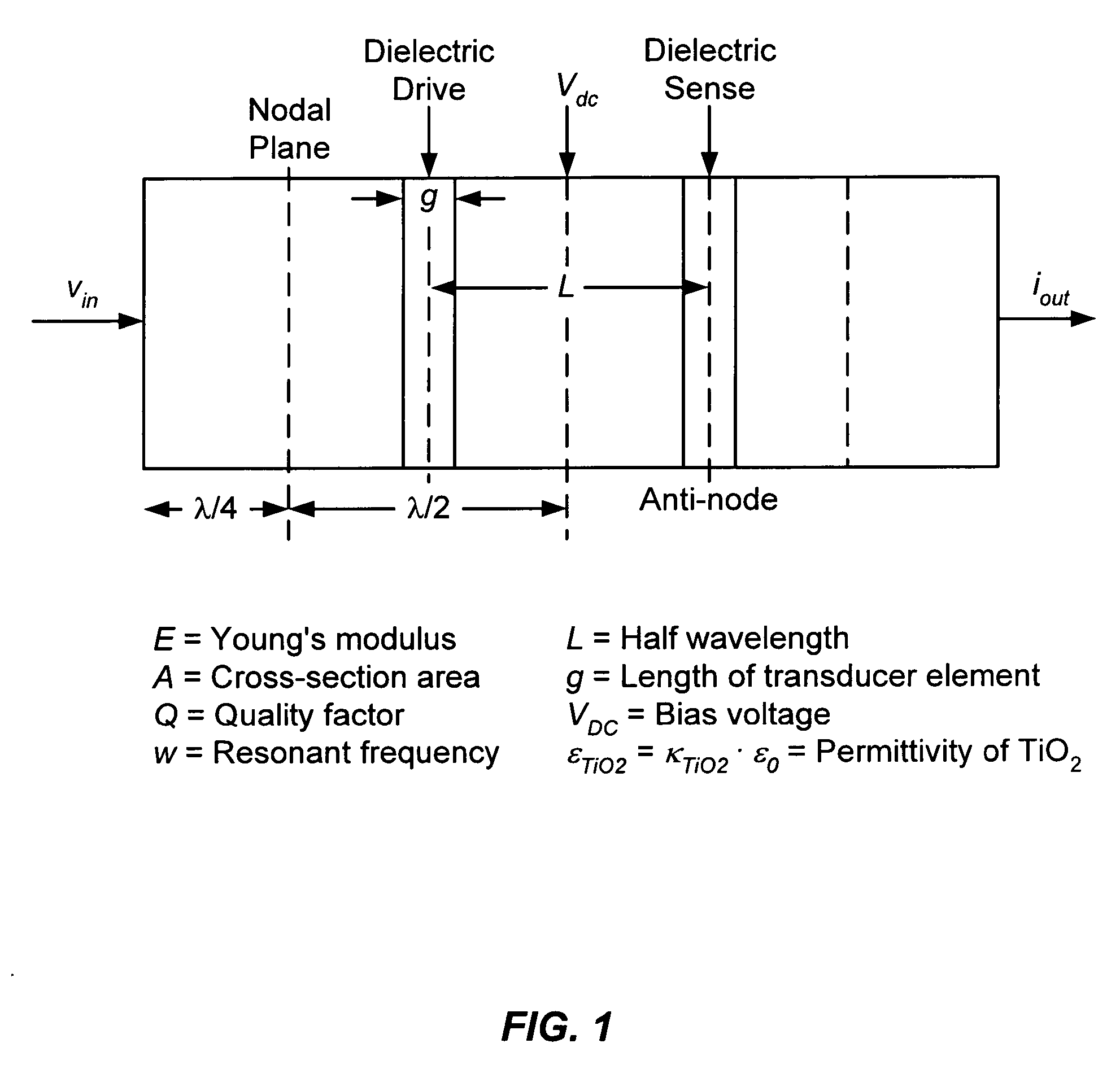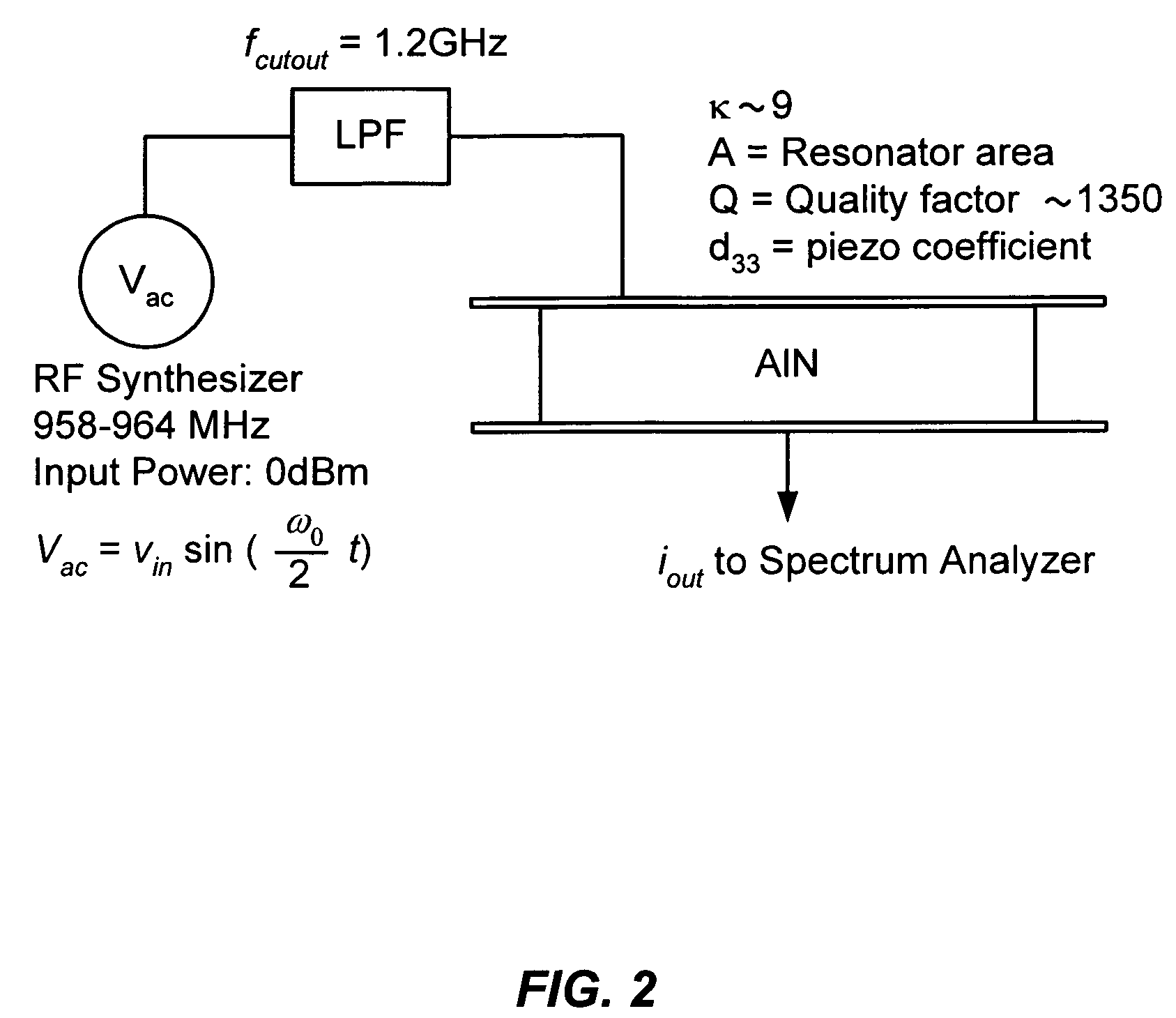Internal electrostatic transduction structures for bulk-mode micromechanical resonators
a micromechanical resonator and electrostatic transduction structure technology, applied in the direction of impedence networks, electrical apparatus, etc., can solve the problems of more difficult fabrication than conventional surface micromachined devices such as accelerometers, and achieve the effects of reducing motional impedance, extending dynamic range, and reducing manufacturing costs
- Summary
- Abstract
- Description
- Claims
- Application Information
AI Technical Summary
Benefits of technology
Problems solved by technology
Method used
Image
Examples
example
Electrostatic Excitation of an FBAR
[0066] An Agilent Technologies' AIN FBAR (e.g., see, Ruby et al., “Ultra-Miniature High-Q Filters and Duplexers using FBAR Technology,” ISSCC, 120-121 (2001)) was used to demonstrate internal electrostatic transduction. AIN has a relative permittivity of κ˜9 and the resonator has a mechanical quality factor Q of approximately 1350 at a resonant frequency of f0=1.92 GHz. FIG. 2 shows a schematic diagram of the test equipment setup for half-frequency measurements. Electrostatic force is quadratic; therefore the FBAR is actuated with an input signal at half the resonant frequency. This ensures that there is no piezoelectric actuation of the resonator. A low-pass-filter was added to prevent any harmonics from the RF synthesizer from reaching the input electrode. The Spectrum Analyzer was set to MAX_HOLD as the synthesizer frequency was swept near half-resonance frequency.
[0067] Electrostatic actuation generates stress in the resonator at the resonant...
PUM
 Login to View More
Login to View More Abstract
Description
Claims
Application Information
 Login to View More
Login to View More - R&D
- Intellectual Property
- Life Sciences
- Materials
- Tech Scout
- Unparalleled Data Quality
- Higher Quality Content
- 60% Fewer Hallucinations
Browse by: Latest US Patents, China's latest patents, Technical Efficacy Thesaurus, Application Domain, Technology Topic, Popular Technical Reports.
© 2025 PatSnap. All rights reserved.Legal|Privacy policy|Modern Slavery Act Transparency Statement|Sitemap|About US| Contact US: help@patsnap.com



